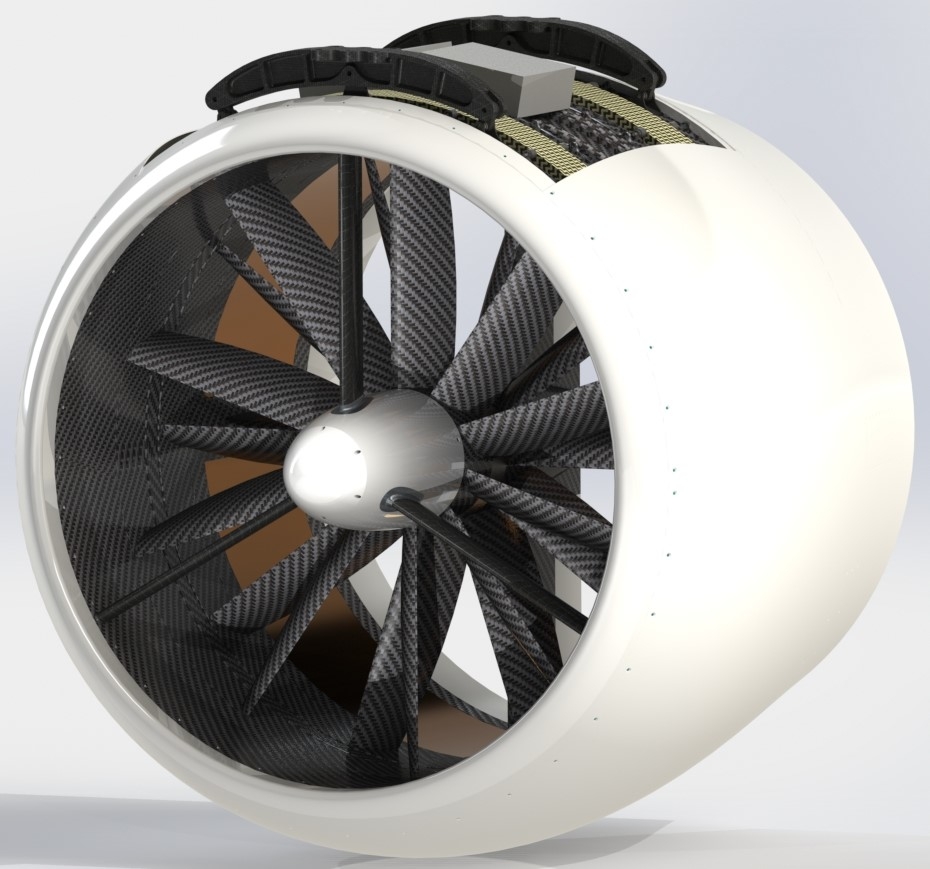Power Train Specialist takes to the air to develop a scalable electric propulsion system to power future air mobility projects in urban environments
British electrified propulsion specialist, Drive System Design (DSD), is taking part in a two-year innovation project as a key partner alongside the Aerospace Technology Institute (ATI) and Innovate UK. As part of the project, Drive System Design will develop the electric motor and power electronics for a uniquely packaged and highly integrated propulsion module suitable for a range of aircraft.
The project, known as InCEPTion (Integrated Flight Control, Energy Storage and Propulsion Technologies for Electric Aviation), is led by Blue Bear Systems Research and will be delivered by a consortium of organisations with highly specialised skills and infrastructure for design and test. The project will develop a modular electric propulsion unit for manned and unmanned aerial vehicles, vertical take-off and landing (VTOL) and conventional take-off and landing (CTOL) aircraft for up to 30 passengers.
The project is a joint Government and industry investment to maintain and grow the UK’s competitive position in civil aerospace design and manufacture. It has significant government backing as part of the country’s drive for innovation and is supported by the ATI, the Department for Business, Energy & Industrial Strategy (BEIS) and Innovate UK, who amongst them will address technology, capability and supply chain challenges.
Unmanned systems and Aerospace specialist Blue Bear Systems Research will lead the consortium of innovation partners from industry and academia which, as well as Drive System Design, also includes Dowty Propellors, Ricardo and dielectric liquid specialist M&I Materials.
The University of Cambridge’s Whittle Laboratory and the University of Salford’s Acoustics Research Centre will be the main academic facilities that will also be taking part in the project and applying the latest advanced knowledge from the world of academia.
Electric Propulsion
According to John Morton, Drive System Design Engineering Director, the development of a stand-alone electric propulsion unit for the aerospace industry is a fascinating project that poses many novel challenges.
“Our motor and inverter will play a critical role in meeting the efficiency and mass requirements and the level of integration in the unit and the modular construction means we will need to work very closely with our partners to ensure the project is successful,” he says.
To help overcome the engineering challenges posed by the new nature of the project, as well as to accelerate development, it will benefit from the company’s established ePOP (electrified Powertrain Optimisation Process) tool, which has been adapted from the automotive industry to be suitable for aerospace applications.
“This enables us to apply DSD’s system approach, proven for our automotive customers, to aerospace, simulating tens of thousands of possibilities in order to optimise the way the sub-systems operate together within a strictly defined physical package,” Morton continues.
Motor Testing
Following the design stage, Drive System Design will test and develop the motor and inverter at its test centre in the UK. It is one of Europe’s main independent electrified propulsion test facilities specialising in durability, NVH and environmental testing.
Morton believes that the project will significantly enhance the company’s existing NVH skills with a deeper understanding of physcho-acoustics.
“This marks a key milestone in our mission to advance the development of future mobility systems, facilitating cross-sector collaboration and enabling the industry to engineer a sustainable future,” he concludes.

